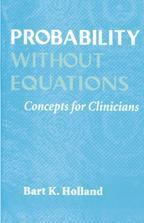
Reviews
A deeply old-fashioned treatise in which a statistic of Mr. Taylor's devising (potential runs per game) is used to rate the top hitters in history by era, position and role... Charming.
Most baseball statistical analysts believe that 'traditional' measures of player performance—batting average, runs batted in, and so on—are lacking... In Taylor's model, the key measure is 'bases per plate appearance'... This is a compelling model.
This book recounts the careers of hundreds of baseball players and measures their performance according to different yardsticks. It is nostalgic for me because I knew many of them from my playing days and many others from my subsequent days in organized baseball. It should be an invaluable aid to those interested in the players of the past and how they compare with the players of today.
What an intriguing read! Of all the measurements that have been incorporated to determine value over the last 20 years, The Runmakers, with its 'bases per plate appearance,' in my opinion, is the closest formula to define the greatness of hitters. From Babe Ruth through the dead ball era, lowering of the mound, and the emergence of Bonds, McGwire, Sosa, and the 70–home run seasons, Taylor gets it right.
Book Details
Preface
List of Abbreviations
Pregame Analysis
Part I: Every Era Has Its Greats
1. The Era of Constant Change, 1876-1892: The Age of Dan Brouthers
2. The Live Ball Interval, 1893-1900: The Age of Ed
Preface
List of Abbreviations
Pregame Analysis
Part I: Every Era Has Its Greats
1. The Era of Constant Change, 1876-1892: The Age of Dan Brouthers
2. The Live Ball Interval, 1893-1900: The Age of Ed Delahanty
3. The Dead Ball Era, 1901-1920: The Age of Ty Cobb
4. The Live Ball Ea, 1921-1941: The Age of Babe Ruth
5. The Live Ball Continued Era, 1942-1962: The Age of Ted Williams
6. The Dead Ball Interval, 1963-1976: The Age of Hank Aaron
7. The Live Ball Revived Era, 1977-1992: The Age of Mike Schmidt
8. The Live Ball Enhanced Era, 1993-2009: The Age of Uncertainty
Part II: The Ultimate Lineup Card
9. Fielding a Team of Great Hitters
10. The Table Setters
11. The Table Clearers
Part III: Hot Stove League Favorites Revisted
12. Left on Base
13. Whatever Happened to the Triple Crown?
Postgame Report
Appendix: Using the BPPA Formula in Fantasy Baseball Leagues
Notes
Index





